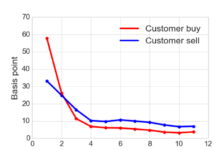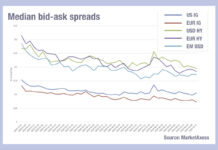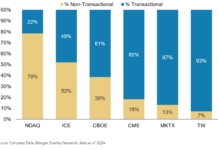
By Charlie Campbell-Johnston.
The promise of a fully automated over-the-counter (OTC) workflow might sound like trading technology’s highest calling. After all, the idea of applying a set of pre-determined rules, then pushing ‘send’ to automatically execute dozens, hundreds or even thousands of trades, while satisfying best execution requirements, is a quantum leap forward in efficiency and accuracy from the days of phone-based trading.
It’s even become a popular alternative to more traditional forms of electronic trading based on request-for-quote (RFQ) protocols to connect with pools of liquidity. In fact, the percentage of RFQ tickets in Europe completed via Tradeweb’s Intelligent Automated Execution (AiEX) increased from 50% in 2020 to 66% in 2022, as growing numbers of liquidity-taking participants adopted automation.
However, despite its popularity and the huge volumes being executed, the growth of fully automated trading was not in itself the most impressive technological milestone of the past year. The bigger achievement, with even more potential to transform credit markets in particular, has been the introduction of a hybrid approach to automated trading. This low-touch process, as opposed to a no-touch process, involves merging elements of the traditional RFQ workflow with elements of fully automated trading to create a new, enhanced trading experience.
In practice, this hybrid approach to RFQ enables market participants to direct a trade through an automated channel, while allowing for manual intervention from an experienced trader if any of the predetermined rules are not satisfied. A classic example would be where a trader needs to make a judgement call between the quality and number of quotes returned. Most best execution policies allow for this kind of trader discretion to give the best results for their end clients, and that level of manual intervention, in an otherwise automated trading workflow, is now possible.
From a technology perspective, the hybrid approach is more complicated to implement than a clear-cut, binary, automated vs. manual workflow. Yet that’s exactly where Tradeweb has been focused over the course of the last year, as we have found ways to fuse our automated with our traditional RFQ workflow to create ever more execution efficiencies for the buy-side trader. The end result allows the combination of the AiEX product’s rich functionality covering data-driven counterparty selection together with advanced pricing evaluation to work seamlessly with our RFQ protocol, allowing the full flexibility of either a low or no touch trading strategy.
In European credit, for instance, the result has been a marked shift in the behaviour of European clients who have been executing a rapidly growing number of credit trades, along with more complex orders through the AiEX platform. Through November of this year, the total number of European credit tickets executed via AiEX increased 10% on a monthly basis and over 40% over the same period last year.
It is noteworthy that this trend has persisted throughout a period of historically tumultuous bond market performance. Throughout Europe, investment-grade funds have lost €25.2bn in net outflows through October of this year, and high-yield funds have lost €12.7bn in outflows over the same period.
Since Tradeweb first introduced AiEX more than ten years ago, the tool has proved its flexibility, scalability and resilience in different volatility and liquidity market conditions. Its latest iteration could not have come at a better time for traders. Markets have once again been challenging and despite concerns over liquidity constraints, clients have continued to embrace AiEX, opting for the new hybrid approach when regaining control over their orders becomes a necessity.
About the author:
Charlie Campbell-Johnston is managing director for AiEX and Workflow Solutions at Tradeweb.



















